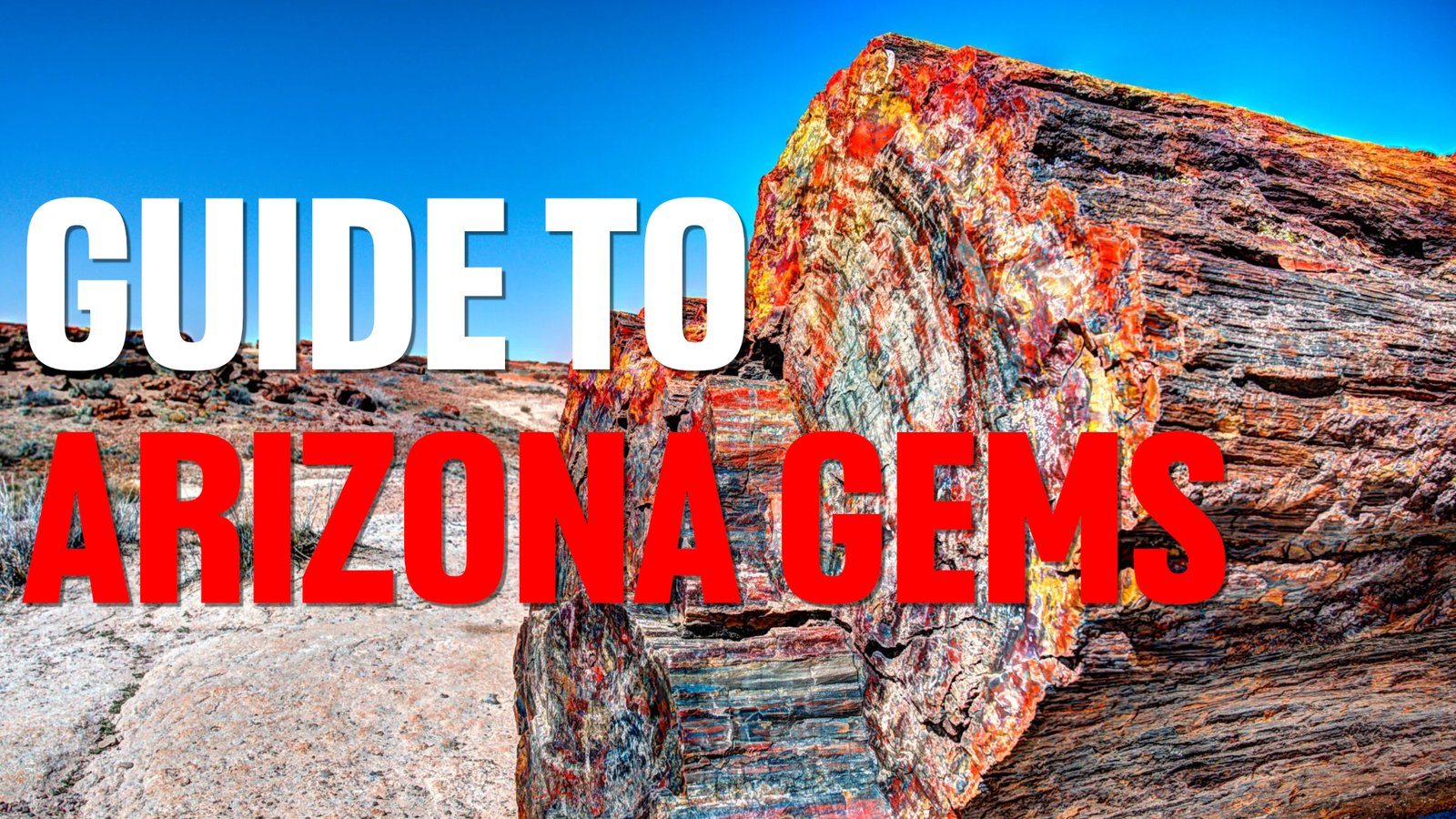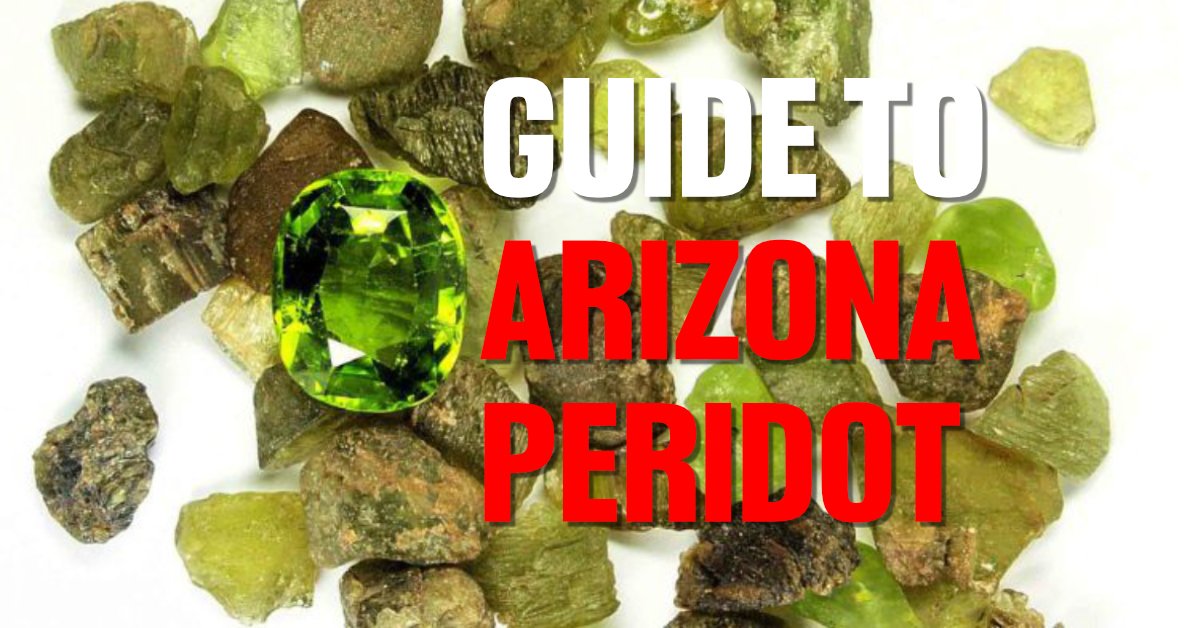If you have ever visited the state of Arizona, you will know that there is a ton of geological diversity.
The state's unique geology has created an ideal environment for the formation of a wide array of gemstones, including copper-based minerals.
In this article, you will learn about the fascinating background of Arizona’s copper formations, the rich copper mining history of the state, the type of gemstones you can find associated with copper, and how to rockhound for copper minerals and gemstones.
If you do want to rockhound for chrysocolla, azurite, malachite, and turquoise, you will need to understand the fundamentals of copper geology in order to know what to look for.
If you are interested in learning more about all the gemstones that originate from Arizona, then check out my Arizona Gemstone and Rockhound Guide.
Love learning about Arizona gemstones? Check out my Arizona Peridot guide!
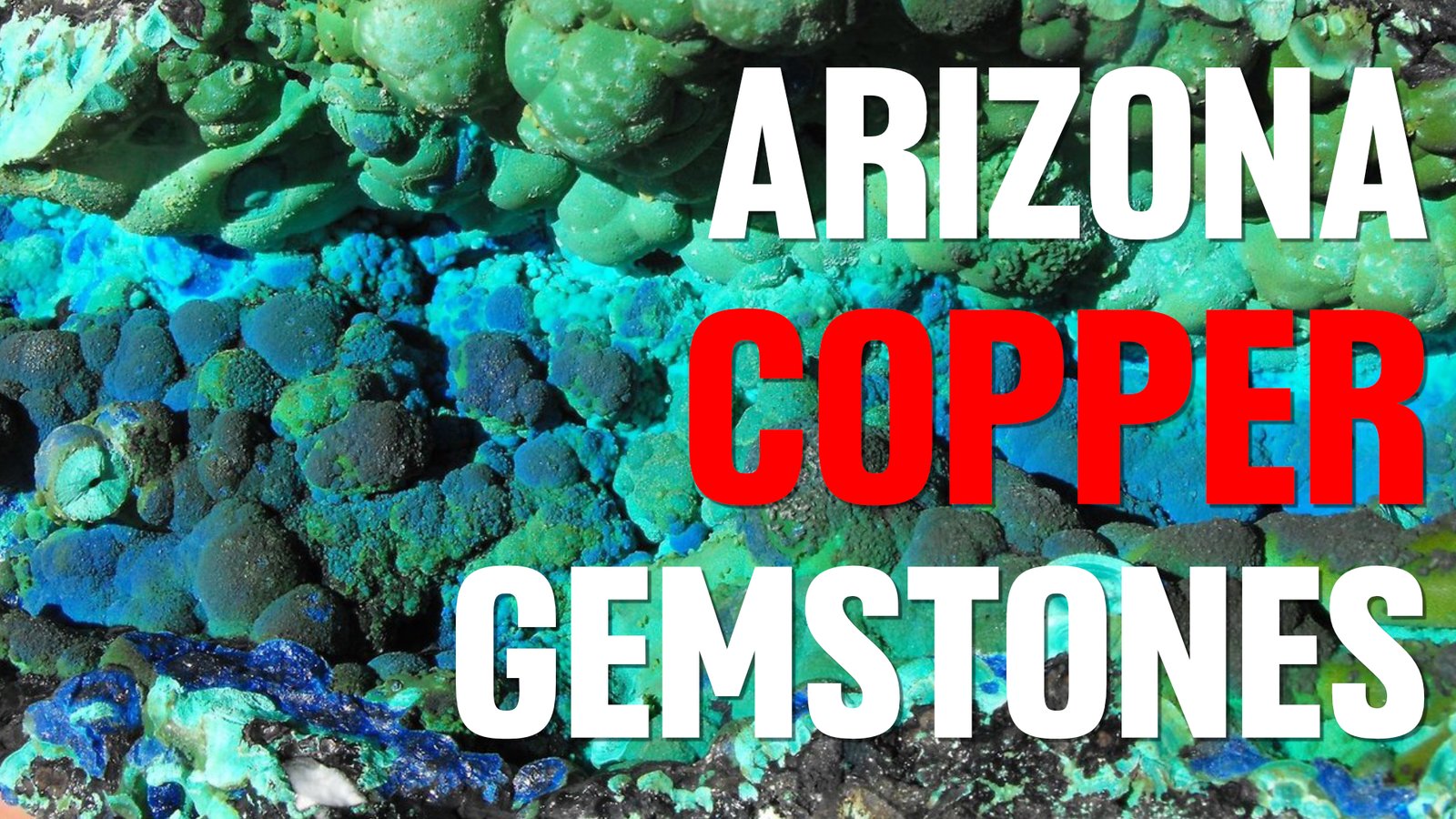
NEW: Arizona Rockhounding Tours with Regina!
Come dig with me at the Lone Star Mine
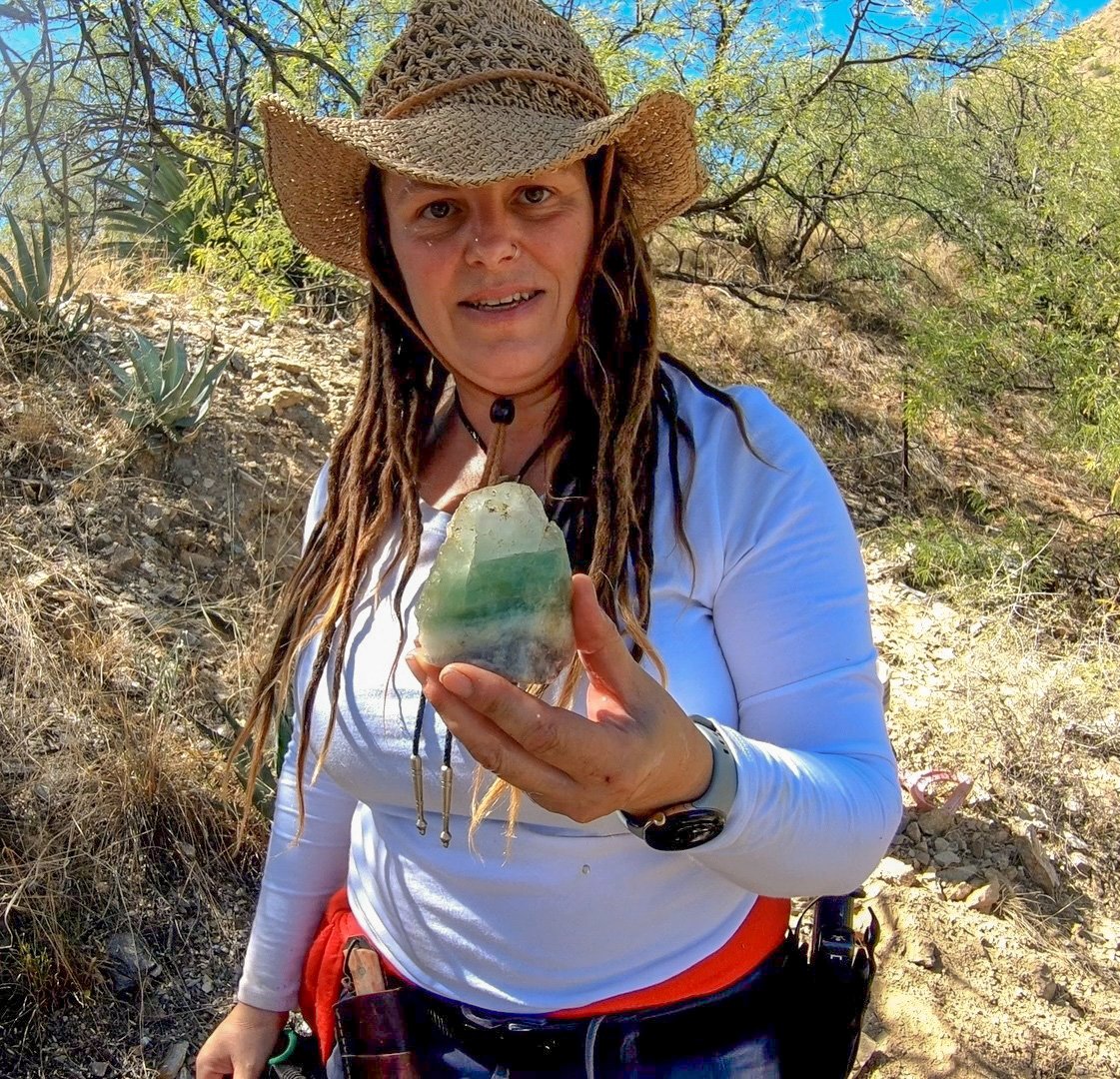
The Lone Star Mine is a fluorite mine that is loaded with thousands of pounds of crystals still in the tailings. It is located in Cochise County, one hour southeast of Tucson. Come on out and I will take you on an adventure you will never forget!
Geological background of Arizona and its mineral-rich formations
Arizona's geological story began over a billion years ago when the ancient Precambrian basement rocks formed the foundation of the state.
Over time, various geological processes, such as plate tectonics, volcanic activity, and sedimentary deposition, shaped and reshaped the landscape.
These processes played a crucial role in the creation of Arizona's mineral-rich formations.
One of the most significant events in Arizona's geological history was the subduction of the Farallon Plate beneath the North American Plate during the Cretaceous Period, approximately 90 million years ago.
This process led to the formation of the Laramide Orogeny, a mountain-building event that created the Rocky Mountains and the numerous mountain ranges found throughout Arizona.
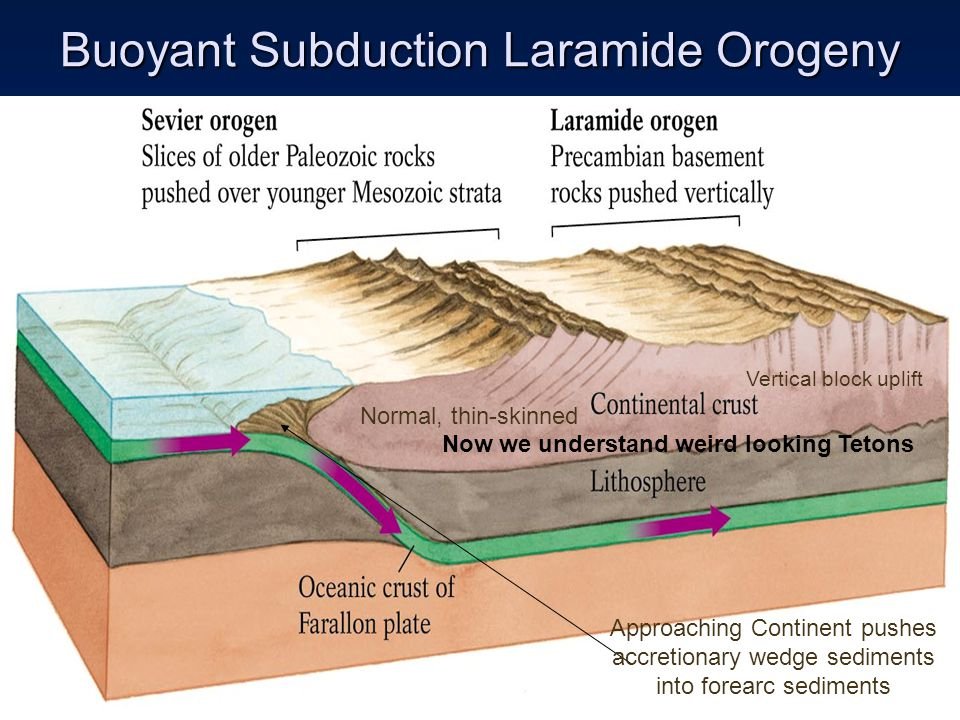
The Laramide Orogeny was accompanied by extensive volcanic activity and the intrusion of magma into the surrounding rocks. As the magma cooled and solidified, it formed large deposits of copper, gold, silver, and other valuable minerals.
Hydrothermal fluids, generated by the magmatic activity, circulated through the rocks, depositing additional minerals in veins and fractures.
Sedimentary processes also contributed to Arizona's mineral diversity. During the Paleozoic and Mesozoic Eras, vast seas covered much of the state, depositing layers of limestone, sandstone, and shale.
These sedimentary rocks later served as host rocks for various mineral deposits, including some of the copper gemstones found in Arizona.
Arizona's mineral-rich formations have been exposed through erosion and weathering over millions of years.
The Grand Canyon showcases the state's geological history, with its colorful layers of rock revealing the various stages of Arizona's formation.

The Formation Process of Copper Gemstones
If you are interested in rockhounding for copper gemstones or are a collector of Arizona gems, I feel that it is important to understand how the gems form. This will immensely help you in the field or if you are looking to purchase these minerals.
One of the primary processes responsible for the formation of copper gemstones is the weathering and oxidation of copper-bearing minerals. When rocks containing copper sulfides, such as chalcopyrite and bornite, are exposed to water and oxygen, they undergo a chemical reaction that alters their composition. This process, known as oxidation, results in the formation of secondary copper minerals, including the colorful gemstones we admire today.
Weathering also plays a role in the exposure and alteration of copper-bearing rocks. As water seeps through fractures and faults in the rock, it slowly dissolves the minerals, carrying the copper ions with it. These copper-rich solutions then react with other minerals and elements present in the rock, leading to the precipitation of copper gemstones in voids, cavities, and along fracture planes.
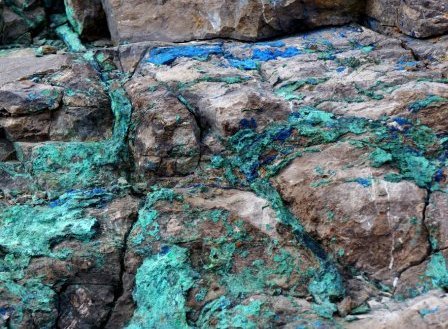
The type of copper gemstone formed depends on the specific chemical conditions and the presence of other elements in the solution.
For example, turquoise forms when copper ions combine with aluminum and phosphate in the presence of water. Malachite, on the other hand, forms when copper ions react with carbonate minerals in a slightly acidic environment. Azurite, another stunning copper gemstone, forms under similar conditions but requires a higher concentration of carbonate in the solution.
The formation of copper gemstones is often associated with the process of supergene enrichment. This occurs when copper-bearing solutions percolate through the rock, dissolving the copper minerals and redepositing them at lower levels. Over time, this process can lead to the concentration of copper minerals in specific zones, creating rich deposits of copper gemstones.
Another important factor in the formation of copper gemstones is the host rock. In Arizona, copper gemstones are often found in association with sedimentary rocks, such as limestone and sandstone, as well as in volcanic and metamorphic rocks.
The presence of other minerals can affect the formation and appearance of copper gemstones. Iron oxides, such as hematite and goethite, are often found in association with copper minerals and can contribute to the vibrant colors and patterns. The presence of silica can also influence the formation of copper gemstones, as seen in the case of chrysocolla quartz, a blue-green gemstone that forms when copper minerals combine with silica.
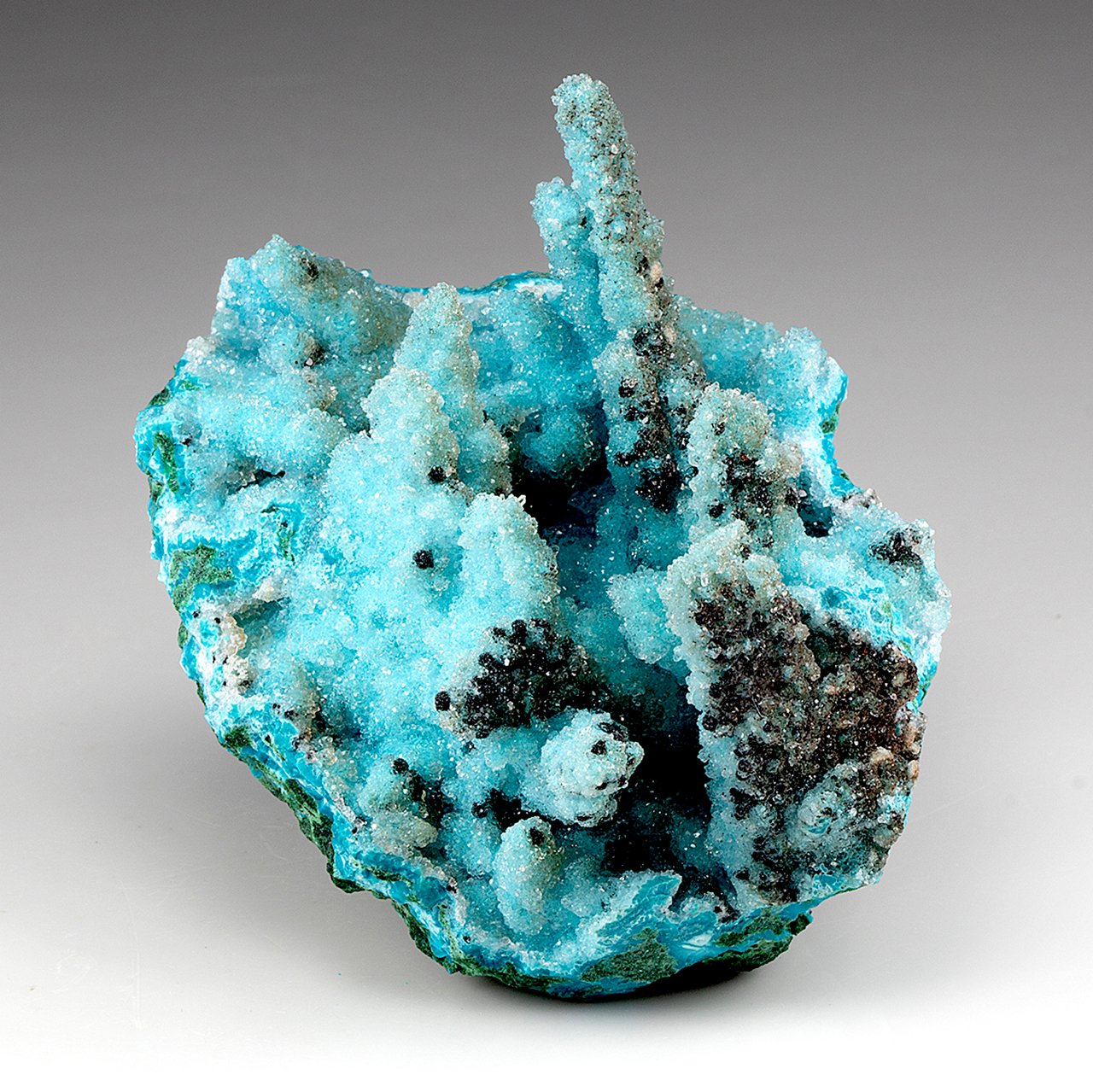
Types of Copper Gemstones Found in Arizona
Here is a list of copper gemstones found in the state:
Turquoise
This blue-green gemstone forms when copper, aluminum, and phosphate combine in the presence of water. Turquoise is often found in veins or nodules within the host rock.
Malachite
Known for its vibrant green color and mesmerizing banded patterns, malachite forms when copper ions react with carbonate minerals in a slightly acidic environment.
Azurite
This deep blue gemstone forms under conditions similar to malachite but requires a higher concentration of carbonate in the solution.
Cuprite
Cuprite, a reddish-orange mineral, is a copper oxide that forms when copper-bearing minerals are exposed to oxidizing conditions near the Earth's surface.
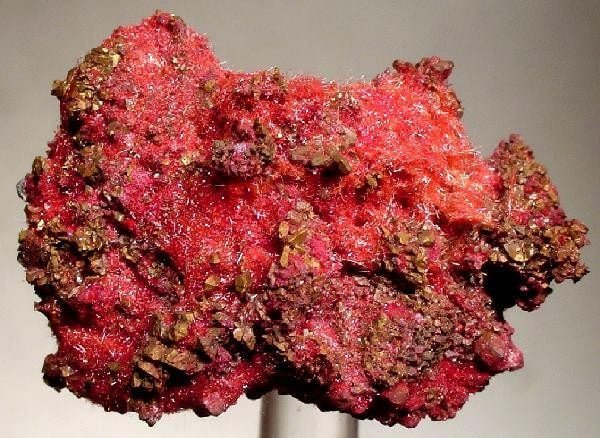
Wulfenite
Although not a copper mineral itself, wulfenite is often associated with copper deposits. This lead molybdate forms in the oxidized zones of lead-bearing mineral deposits.
Chalcopyrite
Also known as "fool's gold" due to its brassy yellow appearance, chalcopyrite is a copper iron sulfide and is the most common primary copper mineral.
The History of Arizona Copper Minerals
Arizona has a long and storied history of copper mining, dating thousands of years ago starting with the Native Americans.
Native Americans and Copper Minerals
Long before the arrival of European settlers, Native American tribes in Arizona had a deep connection with copper and its associated gemstones. These minerals played a significant role in their cultural, spiritual, and economic lives.
One of the most notable uses of copper by Native Americans was in the creation of jewelry and ornaments. Turquoise was and still is highly prized by many tribes for its beautiful color and spiritual properties. Tribes such as the Navajo and Zuni were skilled in the art of lapidary, creating intricate designs and patterns using turquoise and other copper-bearing gemstones.
Native Americans ground vivid green Malachite into pigment and was used in pottery, paintings, and body decorations. Deep blue Azurite was also used as a pigment and was used in ceremonial contexts.
Natives also recognized the practical value of copper. They used native copper to create tools, weapons, cutlery, and ornamentation.
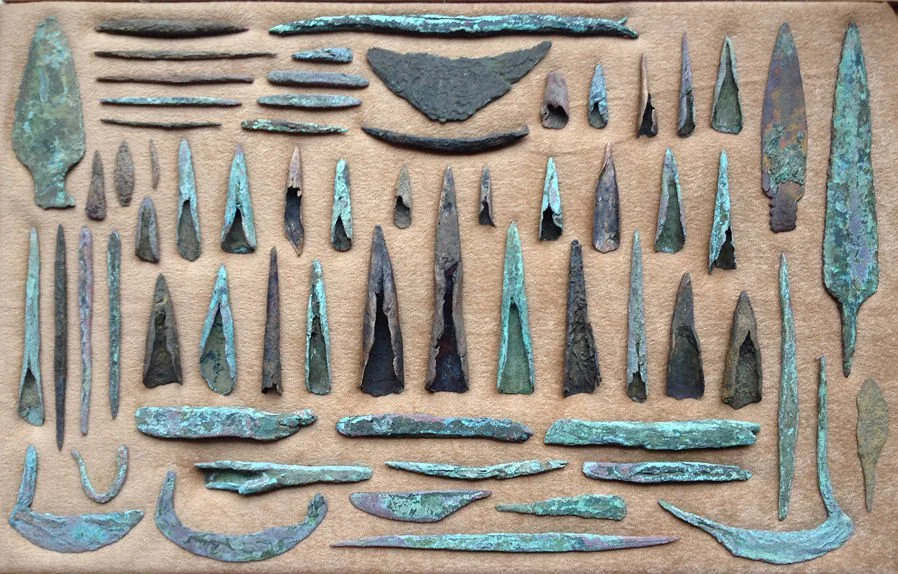
Many tribes believed that copper minerals and gems possessed healing properties and could provide protection against negative energy. Turquoise, in particular, was often associated with the sky and was believed to promote wisdom, tranquility, and communication with the spirit world.
As European settlers began to arrive in Arizona, they quickly recognized the value of the region's copper deposits. The development of large-scale mining operations often led to conflicts with Native American tribes, who saw their ancestral lands and sacred sites threatened by these activities.
Historical Copper Mining in Arizona
Some of the biggest and most historical copper mines in Arizona include:
Morenci Mine
Located in Greenlee County, Morenci is one of the largest copper mines in North America, and has been operating since 1872. Initially an underground mine, Morenci transitioned to open-pit mining in the 1930s.
It’s estimated that the Morenci Mine has produced over 6 million tons of copper since its beginnings in 1872.
Bisbee Mine
"The Copper Queen" mining complex is located in Bisbee, AZ. The mine began operation in the late 1870s and quickly became a major producer of copper, gold, and silver. The town of Bisbee grew up around the mine, and by the early 1900s, it was one of the largest cities in Arizona.
The Bisbee Mine was also the site of the notorious Bisbee Deportation of 1917, where over 1,000 striking miners and their supporters were illegally deported from the town by local law enforcement and company officials.
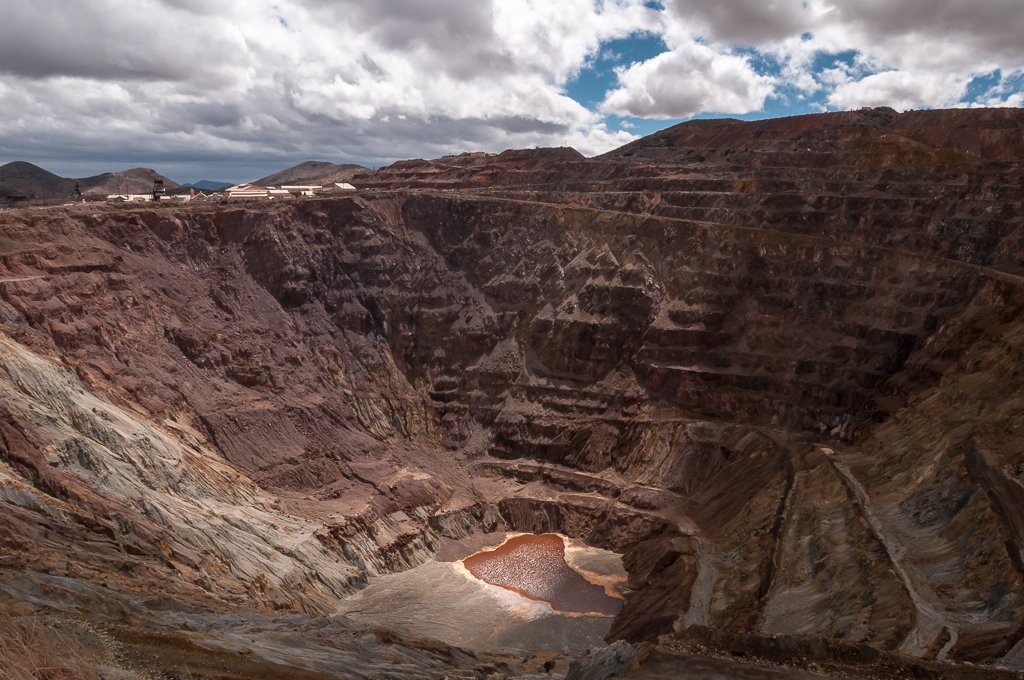
Ray Mine
The Ray Mine has been in operation since 1911 and has a unique geological feature known as the "Ray Diabase," which is a dark, igneous rock that is found throughout the mine.
During World War I, the demand for copper increased significantly, leading to a boom in production at the Ray Mine. The mine played a crucial role in supplying copper for the war effort.
The Bagdad Mine
Copper was discovered at the Bagdad Mine in the 1880s and began production in the early 1900s. The mine has been owned and operated by several companies throughout its history, including Phelps Dodge and Freeport-McMoRan.
In the 1970s, the Bagdad Mine became one of the first in Arizona to implement a solvent extraction and electrowinning (SX-EW) process, which allowed for the efficient extraction of copper from low-grade ores.
A few more notable mines include the Miami Mine, United Verde Mine, and Ajo Mine.
Notable Copper Gemstone Discoveries and Specimens Found in Arizona
One of my favorite gemstones to rockhound for in Arizona are any type of copper gemstone. Their beautiful vivid greens, blues, and turquoise colors cannot be replicated and are completely unique to copper mineralization. Here is a list of infamous copper gemstones that are found in the state of Arizona.
Morenci Turquoise
In the early 1900s, the Morenci Mine produced some of the finest turquoise specimens ever discovered. The Morenci turquoise is known for its vibrant blue color and unique iron pyrite and limonite matrixing.
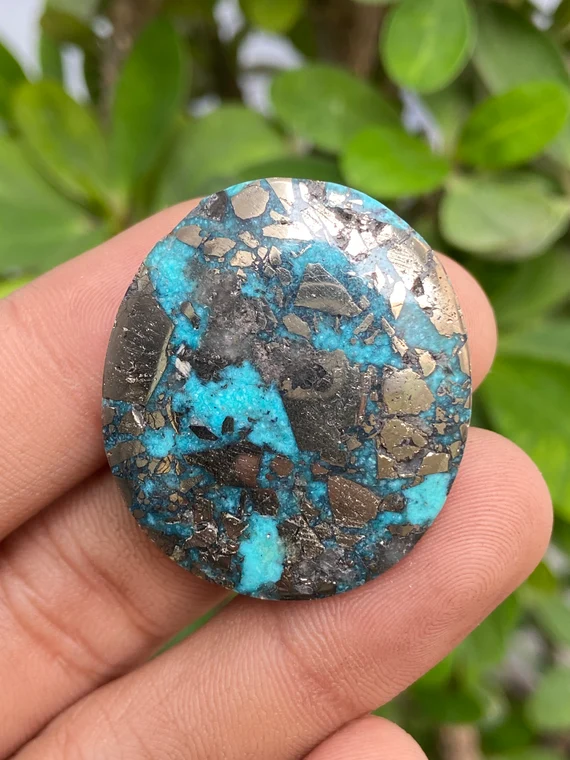
Bisbee Blue
The turquoise from Bisbee is characterized by its deep, rich blue color, which is often compared to the hue of the Mediterranean Sea. This striking blue is beautifully contrasted by the presence of a reddish-brown matrix, created by the iron oxide content in the host rock.
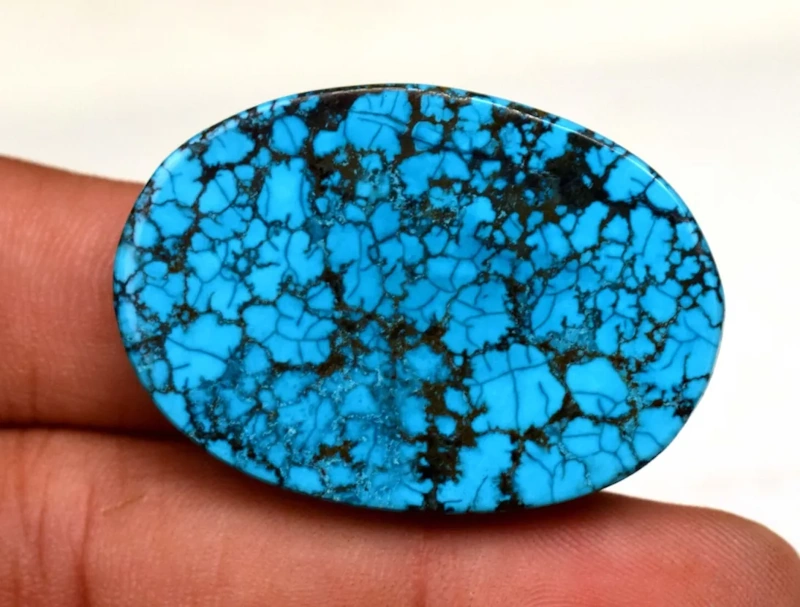
The Red Cloud Wulfenite
The Red Cloud Mine in Yuma County has produced some of the most remarkable wulfenite specimens found in Arizona. In the 1960s, miners discovered a pocket containing hundreds of bright orange wulfenite crystals, some measuring up to 2 inches in length. These specimens, known for their exceptional color and clarity are highly prized by collectors.

Inspiration Malachite
The Inspiration Mine in Gila County produced vivid specimens with intricate banding patterns, showcasing various shades of green that range from light apple-green hues to deep, rich emerald tones.
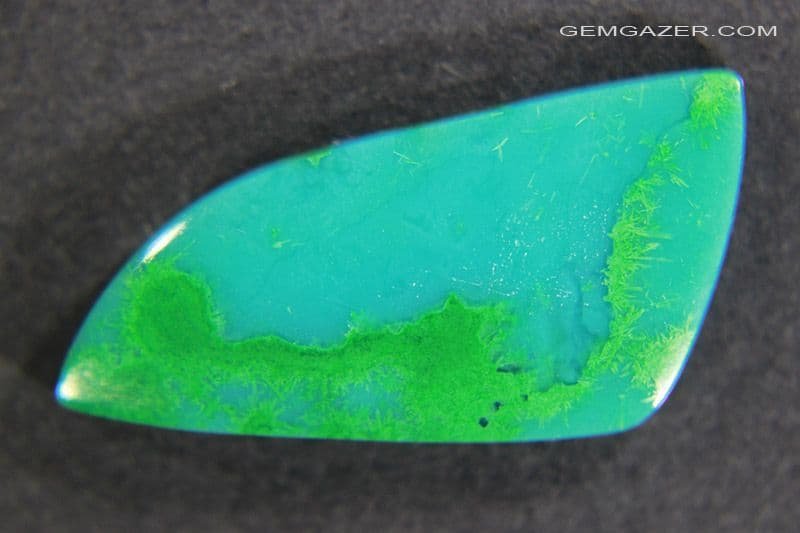
Sleeping Beauty Turquoise
The Sleeping Beauty Mine in Gila County has produced some of the most sought-after turquoise in the world. The mine, which closed in 2012, was known for its consistent, robin's egg blue turquoise with minimal to no matrixing resulting in smooth flawless turquoise.
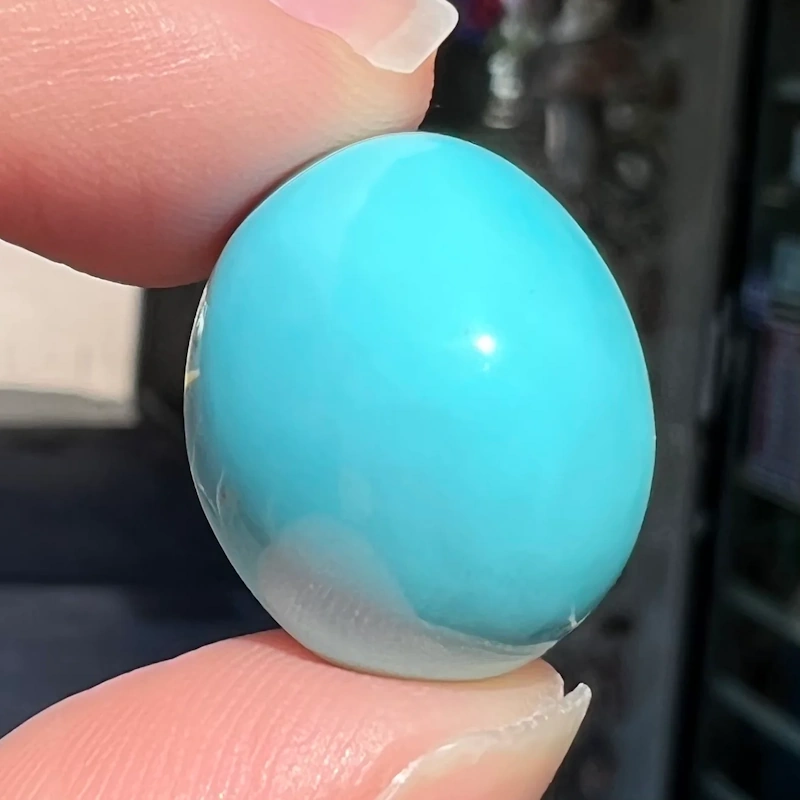
Milpillas Azurite
Although Milpillas azurite is not found in Arizona, it is worth mentioning due to its exceptional quality and its close proximity to the state. The Milpillas Mine has yielded azurite specimens of unparalleled size, color, and crystal form, making them highly sought after by collectors and museums worldwide.

Rockhounding for Copper Gemstones in Arizona
The most effective way to find copper gemstones in Arizona is to go through the tailings of old copper mines throughout the state. You may be able to find outcroppings of copper ore but this would take much more time in the field and you would need to have top notch geology skills to find the outcroppings.
Now, before you go setting out on your hunt, you will need to know what mines are abandoned and on public lands without an active claim on them. For this information, I suggest watching my video about gemstone mapping systems. This will give you the tools you need to find the dig sites that are fair game.
Many of the infamous stuff like Bisbee, Morenci, and Ray, are all on private lands and you cannot rockhound these locations.
But good news! There are plenty of old abandoned copper mines you can dig around in and find these awesome gemstones.
I have found at least a dozen old copper mines in my county and have found Azurite, Malachite, and Chrysocolla at these sites. However, it is much harder to find turquoise because it requires an additional mineral (phosphate) for the stone to form.
It is also hard to find silicate specimens which is when copper minerals form with silica and creates gem quality.
But with some research and determination, you can find these gemstones in Arizona.
Conclusion
Arizona's unique geological history and mineral-rich formations have made it a treasure trove for copper gemstones. From the vibrant blue of turquoise to the deep green of malachite, these gems have captivated people for centuries. The state's rich mining history, dating back to the Native Americans and extending through the era of large-scale copper mining, has unearthed countless notable specimens that are prized by collectors worldwide.
For those interested in rockhounding for copper gemstones in Arizona, the key is to research abandoned mines on public lands and dig through the tailings. While it may take some effort and knowledge of geology, the reward of finding your own piece of Arizona's copper gem history is well worth it. So grab your tools, do your homework, and head out into the Arizona wilderness – who knows what treasures you might uncover!
Learn how to rockhound with my Rockhounding for Beginners Complete Guide!


